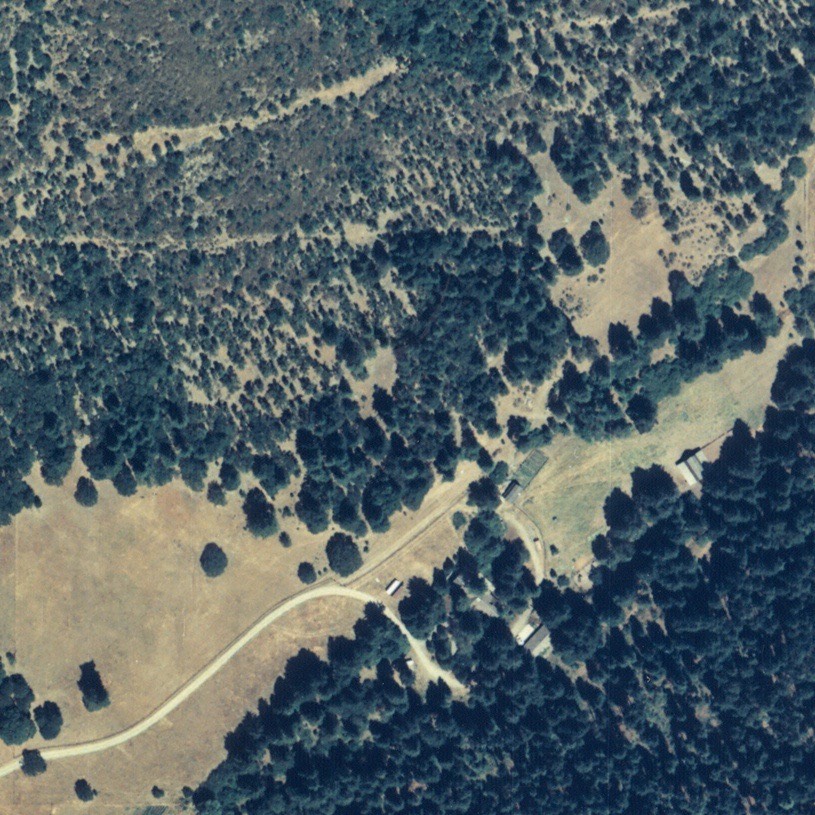January 29th, 2009
Change continues at Gargoyle Gulch. Here’s the aerial photo:

A few changes are easy to notice: the garden behind the shed is green now. That’s because this photo was taken on August 8th, well into the summer. The plants in the garden have had enough time to grow. That’s a big garden; I estimate its size to be about 70 feet long by 20 feet wide.
Another change, more ominous from my point of view, is the new fencing. You can see it along the west edge of the property as a vertical white line. It’s just a barbed wire fence, but even something that small shows up on these aerial photos. You can also see another fence in the lower left corner. In the field the fences are easy to see, but in the trees, it’s almost impossible. There’s also a fence running along the northern edge of the driveway, jigging across the secondary driveway and continuing towards the shop, where it is lost in the trees. Now, fences are a lot of work to build and, when you’re talking about this much fencing (perhaps half a mile in total length), there’s also considerable expense. So people don’t put up fences unless they intend to use them for something: keeping animals inside. I happen to know that these animals were horses. But there’s a mystery here: what’s the full route of the fence? In particular, what’s its northern boundary? Blessed with afterknowledge of the current fences in place, as well as remains of old fences, I can make some guesses, but none of them are supported by the aerial photo. My best guess involves the scar running roughly west to east through the manzanita forest. It’s a small distance down from the top and curves. It disappears into a heavily wooded area and emerges on the other side. Again, people don’t clear manzanita for kicks -- this was done for a reason, and the most likely reason would be to clear the ground so as to lay down a fence (it’s impossible to lay out a fence in thick brush.) In fact, if you look closely at one section of that scar, you can see a thin white line that might be a fence. But there are several problems with this hypothesis. First, I’ve walked that ground many times and there are no indications of any old fencing. If somebody laid down a fence in the late 1970s, then they must have carefully removed it at a later time -- and the only time you pull out a fence is when you’re going to replace it. There is no replacement fence anywhere around there, nor are there any traces of the original fence. I can still find the trace of the scar, but no fencing anywhere near there.
In other fencing news, you can see that the paddock built in front of the barn in 1975 has now been removed and a new paddock to the east of the barn has appeared. That new paddock is still there. The fence along the eastern boundary of the land is also visible about one-quarter of the way down from the top right corner. There are four small trees running along it. We’ll be keeping an eye on those trees.
You can also see that the shingles on the roof of the barn and the shop have both grayed out from their bright orange color in 1975. That’s what shake shingles do in sunlight.
There are a variety of oddments scattered around the area near the house. They’re too big to be cars. I really can’t identify any of them, except for the new garage to the southeast of the southeast end of the house. The giveaway is the bright white of the cement in front of it. The dirt driveway has a slight yellowish color, but the cement is pure white.
